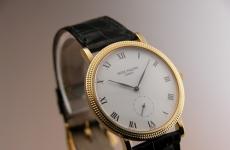How to properly cut a ceiling plinth. How to cut corners on ceiling moldings? Step-by-step instructions, practical recommendations and tips. Preparation for work
Methods for cutting a ceiling plinth for joining in internal and external corners using a miter box, a template, or a wall marking method. Tool selection rules and useful tips.
The content of the article:
One of the most difficult steps in the installation of ceiling plinths is their correct cutting. Only by correctly joining the individual elements at the outer and inner corners, you will get the desired result. Fillets will look aesthetically pleasing and neat if they are cut at the right angle and the gaps are sealed. To perform this task, a special tool (miter box) is used. And if not, then other devices will help.
Selection of tools for cutting ceiling plinths

To correctly and accurately cut the ceiling plinth, you need to use a tool suitable for cutting. It is chosen depending on the material from which the fillets are made:
- Styrofoam. It has low strength and is relatively inexpensive, and therefore foam models are becoming more and more popular. Their strength does not particularly affect performance, since usually the ceiling plinth is not subjected to mechanical stress. For cutting, a regular clerical knife is suitable.
- Extruded polystyrene foam. A cheap material whose density is several times higher than that of polystyrene. Because of this, cutting it is a little more difficult, and therefore a sharp and thin knife is used for this purpose.
- Tree. Such skirting boards are more difficult to process, although they have many advantages (environmental friendliness, strength). They cost more
especially if they are made of hardwood. Before cutting the ceiling plinth from wood, stock up on a hacksaw.
It can be purchased at a hardware store or made by hand according to the following instructions:
- Three boards 50 * 15 cm are knocked together with a long edge into the shape of a three-sided, rectangular box. Please note that a 90 degree angle must be observed between the side bars and the transverse plank.
- Using a protractor, mark an angle of 45 degrees on the bars. Instead of a protractor, you can use a school square. In it, one angle is 90 degrees, and the other two are 45 degrees.
- Before cutting corners, mark the vertical direction with a simple pencil.
To work with this home-made device was convenient and safe, the boards must be well sanded before fastening.
Technology for cutting ceiling skirting boards
For prompt and high-quality work, you need to choose a tool in accordance with the material of the plinth and choose a cutting method. If you have a miter box, then there will be no particular difficulties in the process. If it is not there, then two options are possible: cut according to the template and measurements on the ceiling, or make this tool yourself.
Features of cutting ceiling plinths in a miter box

It is necessary to work with this device extremely carefully so as not to dull the tool and not to leave gashes in unnecessary places. In the process, we adhere to the following instructions:
- We fix the baguette in the miter box in the way it is planned to place it on the wall. The side that will be pressed against the ceiling on the miter box should be adjacent to the sidewall.
- We insert a cutting tool (hacksaw or knife) into the desired gap and cut the fillet.
- We process the junction of the ceiling plinth and apply it to the wall to check the correctness. The foam molding can be corrected with a sharp knife, if the unevenness of the end is about 2 mm. Wooden plinth can be simply sanded with sandpaper. For ease of use, it can be glued to a wooden block.
When cutting and trimming foam and polyurethane products, remember that these materials crumble and push through, so the tools must be sharp enough, and a strong mechanical impact on them is undesirable.
Technique for cutting ceiling plinths according to a template

This method can be used if your corners are even and you want to cut the baguette exactly 45 degrees. To do this, before cutting the ceiling plinth in the corners, you need to draw a miter box on thick paper. We draw two parallel lines and mark the angles at the desired degrees using a protractor.
We place the fillet in this case in the same way as on a traditional miter box. Please note that you need to cut the plinth while holding the tool in a strictly vertical position.
Rules for cutting ceiling plinths by marking

This method is used to cut the plinth in cases where there is neither a miter box nor parts from which it can be made.
To do this, you need to make markings on the wall in this order:
- We apply the baguette in the corner to the place of fasteners.
- On its one edge, we draw a base line for the mounting level on the ceiling.
- We apply the fillet in the same way to the perpendicular line drawn on the ceiling and again draw a straight line along one side. We should get two segments that intersect at one point.
- We again apply two skirting boards in turn and mark this point on them.
- We repeat the same procedure now on the wall to mark the place of cutting from below on the products.
- We connect two points with a line. It can run at an angle of 38-45 degrees, since the walls and corners in living rooms are often uneven.
- Cut off the baguette along the drawn line.
When cutting in this way, it is important to accurately draw all the lines and mark the points. An error of even a few millimeters will cause a gap to form. This method is suitable for cutting and joining both the inner and outer corner of the ceiling plinth.
Method for cutting a ceiling plinth without a miter box

To neatly dock in the inner corners of the fillet, you can do without a miter box.
We perform the work in the following order:
- We apply the end part of the baguette to a sheet of paper and trace the contour of the convex side. It is more convenient to use a small piece of plinth (if any).
- Cut out the resulting template.
- We transfer the contour to the surface of the baguette with a simple pencil.
- Cut along the drawn curve.
- To try on, we apply one skirting board tightly with its end part to the wall, and then the second.
- If there are small gaps, then they can be processed with a clerical knife or subsequently sealed with sealant.

When working with a miter box, you need to consider two points:
- The inner corner of the ceiling plinth is formed from two elements: the first one is inserted from the right into the miter box and cut from right to left, the second one is wound from the left and cut from left to right.
- We start the first part of the outer corner on the left and cut it from right to left, we start the second part on the right and cut it off from left to right.
- Before you start cutting a baguette with a miter box, try cutting off a trial plank to avoid mistakes.
- Correct measurements can be made by measuring the length of the inner corners of the plank along the inner side, and the outer ones - from the point of the inner corner to the width of the fillet deep into the room.
- If the baguette is installed under a stretch ceiling, then it should be attached only to the wall. In no case should the adhesive composition get on the vinyl sheet.
- The final fastening of the plinth should be carried out only after the precise fitting of the plank.
- If the corners and walls in the room are even, then fitting can be done on the floor.
- When installing baguettes, it may be necessary to adjust them several times, so stock up on tools and patience.
- Instead of a template and miter box, you can cut in the corner between the wall and the floor, or by moving a table against the wall. In this case, on the wall, ceiling and baguette, the angle of cutting off the end should be noted.
- If you are interested in the question of how to cut a ceiling plinth without a miter box, and you do not have time to use templates, then you can purchase special corner inserts in advance. They will hide the gaps, but will protrude and stand out on the coating.
- If you have a plinth made of precious woods, then you need to cut and install it very carefully, since a large amount of putty for sealing joints will be too noticeable, and painting over a baguette is an inappropriate solution, because this way you will hide the natural texture of the array.
- Styrofoam products do not have to be fitted to each other end-to-end due to the softness of the texture, but wooden and plastic models must be well joined.
- If trapezoidal niches on the wall need to be bypassed from above with a plinth, then we join the piers at an angle other than a straight one.
In this case, we cut the plinth at an angle equal to half the joint. For example, if the walls are joined at an angle of 120 degrees, then we cut the fillet at an angle of 60 degrees.
How to cut the corners of a ceiling plinth. Photo 1
The problem of cutting out the outer and inner corners of the ceiling plinth was probably faced by everyone who has ever carried out repair work with their own hands. Ceiling plinth, also called a fillet, is used in repairs to hide the uneven border between the wall and ceiling and give the interior completeness. How to cut a corner of a ceiling plinth without a miter box? We will talk about this in our article.
How to cut a ceiling plinth in the corners without a miter box? If you do not have a miter box at hand, it does not matter. You can cut the outer and inner corners without a miter box.
Today, fillets are available on the market in different sizes, shapes and colors, with and without embossed patterns. The material from which they are made is also different. These are mainly: polyurethane, expanded polystyrene, polystyrene and polyvinyl chloride. But recently, the most popular in repair work has become a wooden ceiling plinth. Its aesthetic appearance allows you to add elegance and rigor to the design of the room.
Which plinth is better?
Before you can properly cut the corners on the ceiling plinth, you need to choose it correctly.
Advice: the ceiling plinth will look harmonious if its width is chosen correctly. The higher the walls, the wider the baseboard should be.
The most durable, moisture resistant and elastic are polyurethane fillets. and cutting a corner from such a ceiling plinth is not very simple. However, all these positive qualities are "covered" by one significant drawback - they do not withstand sudden changes in temperature, which does not allow them to be used in all rooms.
For example, in a kitchen where there is a gas or electric stove, polyurethane fillets will retain their original appearance for about a week. After that, with frequent cooking, when hot air rises to the ceiling, then falls, they will begin to deform, spoiling the whole “picture”.
Skirting boards made from other materials also have their drawbacks.
For example, products made of polyvinyl chloride have increased electrostaticity and if dents appear on their surface during operation, it will be impossible to eliminate them. At the slightest mechanical impact, the ceiling plinths made of expanded polystyrene and polystyrene break.
If we talk about which ceiling plinth for stretch or ordinary ceilings is better, then it probably will not be possible to give an exact answer here. Since each of them has its own positive and negative qualities. Therefore, you still have to make a choice, based on the financial resources that you have, and on the conditions under which the fillet will be operated.
How to cut corners without a miter box?
At first glance, it seems that cut off the corner of the ceiling plinthdifficult - I cut the edges of the skirting boards at an angle of 45 degrees and glued them. However, this is absolutely not the case. Each corner of the room may differ in its parameters, for example, one is 90 degrees, the other is 88 or 92.
This difference is normal, especially in buildings over 30 years old. Therefore, if you simply cut the baseboard at an angle of 45 degrees and glue it on the border between the ceiling and the wall, a gap may form that should not be there. How to join the ceiling plinth so that there are no gaps? So, let's begin.
First you need to prepare a tool that will cut the edges of the skirting boards. It can be a saw for metal or an ordinary sharp knife.
How to cut the inside corner of a ceiling plinth without a miter box? The answer lies on the surface.
Step 1. Take the skirting board and attach it to the corner in the same way as you will glue it. With a pencil, draw a line along the baseboard on the ceiling. Remove the fillet.

Step 2. Attach the second plinth on the other side of the corner to the place of its junction with the first. Follow the same procedure as with the first one. As a result, you should get markup.

Step 3. Take the plinth, lean it tightly against the place to which you will be gluing, and transfer to it the point of contact of the two straight lines drawn earlier on the ceiling. From this point, draw a line to the opposite edge of the plinth. This line will be the cut point.

Step 4. Do the same procedure with the second plinth.

Step 5. Cut the edges of the skirting boards along the marked line.
Step 6. Attach the cut skirting boards to the corner. If the place of their joint does not have slots, you can start gluing the fillet. If there are gaps or irregularities, correct the cut corners with a knife.
How to cut the outer corner of the ceiling plinth? When creating an outer corner, the upper part should protrude above the lower one, the inner one - the opposite is true.
Whatever ceiling you glue the plinth on, whether it is the ceiling in the bedroom or the kitchen, do not rush, carefully measure everything. This will help you avoid damaging the material.
It is known that in order to obtain an ideal articulation of two corner blanks of a ceiling plinth, it is necessary to correctly draw up a cut line for each of them. In this article, you can learn how to properly cut a ceiling plinth, as well as get acquainted with the tools that are needed for this.
Skirting board cutting methods
There are the following ways of cutting the ceiling plinth:
- Cutting using a miter box.
- Cutting using a special stencil.
- Cutting by applying a pencil markup.
A miter box is a special device with which you can form an arbitrary angle from those that are in its set of cuts.

When working with this device, the plinth must be inserted into it in exactly the same way as it will be located on the ceiling. Holding the upper part of the workpiece, its lower edge must be pressed against the wall of the fixture and cut according to the shape you have chosen.
To prepare plastic baseboards, you can use a regular hacksaw. But when applying it, you should not make significant efforts, as this can lead to the formation of chips.
Preparation of joints with an arbitrary angle
 Since the walls in the rooms do not always adjoin one another at 90 degrees, it is worth familiarizing yourself with the technique of preparing an arbitrary cut angle.
Since the walls in the rooms do not always adjoin one another at 90 degrees, it is worth familiarizing yourself with the technique of preparing an arbitrary cut angle.
This technique is usually implemented in the following two ways:
- Using a cardboard stencil, the halves of which are obtained by cutting it at the angle you need. Using such a stencil as a template, according to which cuts of plinth blanks are formed, you can get the perfect corner joint.
- The second method involves preparing the cutting site using pencil markings and is as follows:

 Pay special attention to the fact that with this method of marking, maximum accuracy must be observed. The quality of the resulting joint will completely depend on how accurately you carry out this procedure (and, of course, on how accurately you cut the cut on the workpieces).
Pay special attention to the fact that with this method of marking, maximum accuracy must be observed. The quality of the resulting joint will completely depend on how accurately you carry out this procedure (and, of course, on how accurately you cut the cut on the workpieces).
In the same sequence, the cutting lines for the outer corner are prepared. But at the same time, there is no need to transfer the point of intersection of the marking lines to the plinth, since in this situation it is the upper point of junction of the corner parts of the blanks. In this case, you have to move the junction point to the wall.
The final stage of work

Upon completion of operations for the design of joints, a control check of the fit of the workpieces on the cut should be carried out.
In the event that there are gaps in the joint, you will have to fine-tune it by slightly trimming the baseboard or sanding the cuts with sandpaper.
And in conclusion, we will acquaint you with how to properly cut the ceiling plinth more accurately. Fitting the joining line of adjacent sections of the plinth should be done even before you start marking and trimming its length. With the reverse order of operations (first - the length, and then - the angle) and if you fail to design the joint, you risk completely ruining the workpiece.
Video
For more information on the technique of cutting a ceiling plinth for corners, see the following video:
Skirting boards for ceilings are cut in many ways, but professionals use a miter box. This is a carpentry fixture, which is a tray with slots on the sides. A hacksaw is inserted into them, and a board, lining, plinth and other materials that need to be cut at a certain angle are placed on the bottom of the tray.
How to cut a ceiling plinth?
Finishing the finishing work in the house, many homeowners are faced with the problem of cutting ceiling plinths, especially their corners. After all, the attractiveness of the interior depends on them. Without these decorative elements, the rooms look unfinished. Guessing how to cut a ceiling plinth with a square, a metal ruler or a flat bar is not difficult, since here it is only necessary to maintain a right angle.
But in finishing work, trimming of skirting boards is also required at other angles, for example, at 40 degrees. Therefore, the installation of these plastic elements is associated with certain difficulties. To get the appropriate angle, you need to be extremely careful. One of the problems is cutting the ceiling plinth in the corners with further joining.
The following materials are used in the production of skirting boards:
- Wood. Wood is considered the most labor-intensive material for processing. Wooden skirting boards are sawn with a carpentry saw.
- Extruded polystyrene foam. Finishing material of high density. Does not absorb moisture. When burning, it does not emit toxic substances. It is quite difficult to process it, but it is easy to cut. To do this, you only need a carpenter's knife.
- Styrofoam. It is the most brittle, cheapest and easily machined material. Its fragility is not a disadvantage, since the skirting boards are located under the very ceiling and they are not afraid of mechanical influences. You can cut off the ceiling plinth from foam plastic without any effort.
- Polyurethane. Differs in plasticity and flexibility. Due to these qualities, it is used on uneven surfaces. It has water-repellent properties and is resistant to temperature extremes.
- PVC. Difficult to fit material due to increased rigidity. Manufacturers offer different types of finishes from it: imitation of stone, metal, wood and uniform coloring. Becomes brittle in the cold.
Aluminum decorative elements look no less attractive under the ceiling. True, processing and cutting metal is much more difficult than materials from the proposed list. The increased demand for aluminum skirting boards is due to the fact that they are cable channels in which it is convenient to hide wiring and cables. Equally important is aesthetics, non-reaction to aggressive environments and detergents.
Cut the aluminum ceiling plinth with a hacksaw. In order not to break the canvas, the reciprocating movements must be smooth and uniform.
Regardless of the material of manufacture, ceiling plinths can be considered the best solution for creating a unique interior. They are mounted on the most difficult site, which is the junction of the wall and ceiling. Anyone who knows how to properly cut a corner on a ceiling plinth will quickly complete the interior of the room, which will give it more attractiveness. With the help of these elements, small defects can be partially hidden.

The cutting tool is selected depending on the material and the required angles. In rooms of standard shapes with perfectly even walls and ceilings, a miter box is used to cut off the corners of the ceiling plinth. Wood is sawn with an ordinary carpenter's saw, and for other materials, a jigsaw should be purchased. You can also use a hacksaw for metal. To adjust the corners manually, you will need additional tools: a ruler, a square, a protractor, a pencil.
Trimming the ceiling plinth with a miter box
This device works as follows:
- We fix the miter box on the workbench, put a decorative element into the tray and press it to the bottom and to one of the walls. Only in this case it is possible to correctly cut the corner on the ceiling plinth.
- The wood is sawn with an ordinary hacksaw. Insert it into those slots, thanks to which you will get the required angle. Hold the cutting tool perpendicular to the element being cut. The inner as well as the outer corner of the ceiling plinth is also cut out using a miter box.
- To cut a plank of expanded polystyrene, it is better to use a carpenter's knife or a jigsaw.
- It is not recommended to apply force during cutting. The blade must move smoothly, otherwise you can damage the decor or completely deform the product. Foam skirting boards are cut with a jigsaw with the smallest teeth. A knife is not suitable for this work, as the material will crumple and crumble.
Correctly cutting a ceiling plinth where non-standard angles are required is quite difficult. After all, the miter box is not designed for this. If there are no skills, then dents may remain on the products. They are sealed with finishing putty, and then painted in the desired color.
The main difficulty is that when cutting, it is necessary to maintain the required angle, otherwise, when two skirting boards are closed, a clear gap will be visible between them. Many owners do not even pay any attention to this and are absolutely not upset. They just putty all the cracks and paint over. And since it is difficult to choose the exact shade of paint, the whole atmosphere in the room will be overshadowed by the non-aesthetic appearance of the decorative elements.
We offer you to watch a video on how to cut corners on ceiling plinths. Cutting using a template allows you to make a clear end without the slightest deviation. Processing decorative elements without a miter box is also possible, but on condition that a person has a certain skill and knows how to use other auxiliary tools: a square and a protractor. Using them, it will not be difficult to cut the ceiling plinth with non-standard angles.

By the way, the miter box can be made independently at home. To do this, you need three identical boards, 15 cm wide, approximately 50 cm long and 1-2 cm wide. The last two parameters do not really matter, so you can choose them arbitrarily. From these parts we knock together a tray. It resembles a box without ends and a lid. Then, using a protractor on the side planks, we mark the necessary angles with a pencil. Further, according to these marks with a hacksaw, we make cuts to the very base. Two boards should be cut at the same time.
You should know at what angle to cut the ceiling plinth, so make exactly these angles in the planks of the miter box.
If you cannot make such a device, then use another method. In this case you need hard cardboard, from which you can cut a template with the required angles. For this work, you will also need a protractor. If angles of 45 and 90 degrees are required, then you can use a regular square. This is much easier and faster than building a miter box. Take cardboard, mark out and cut out the template of the desired shape. Now it remains only to attach it to the plinth, leave a strip from the pencil on it and cut the ceiling plinth at 45 degrees.
Professional craftsmen begin the installation of decorative elements from the corners, and then proceed to install the skirting boards on straight segments. Your attention is a video on how to cut ceiling plinths in the corners, as well as how to install them.
These products are the final finishing elements. They serve for lining the joints of ceilings and walls. In addition to masking a rough pairing with their help, they are in perfect harmony with any style. The wider the baseboard, the more streamlined the interior looks. For stretch ceilings, such decorative elements are mandatory. They ideally hide the mounting gap between the wall and the frame.

Perhaps from this article you understood how to properly join the ceiling plinth in the corners and how to fix it on straight segments. When choosing such products, they are guided by a simple rule: the higher the walls, the wider the baseboard should be. However, the wider, more heterogeneous and harder it is, the more difficult it is to cut. Therefore, for such work it is necessary to prepare absolutely sharp cutting tools. You can try them on scraps of decorative elements. This will be a kind of training, which in work will allow you to avoid excessive pressure. As you know, this causes dents in polyurethane and PVC, chips peel off from wood, and foam crumbles.
Colors and decor depend on the style of the room. A huge variety of widths, textures and colors, makes it possible to select the best option for a country house or apartment. When installing these elements, the main thing is to cut them correctly. See the photo of how to cut a corner on the ceiling plinth and you can do this work yourself.

The product is cut and fixed in the corners if a fragment of the fastener strip cut at the desired angle, as well as a decorative element that is joined to it, has already been prepared. If, when cutting the plinth, the inner corner turned out to be inaccurate, then you can ignore this. The main thing that clearly aligned front side. It is not recommended to fasten joints to painting. For this, rough plaster is better suited.
Summing up, it can be noted that cutting ceiling plinths is possible without the involvement of specialists. The main thing is to be attentive and do the work thoughtfully and without fuss.
In the article we will figure out how to properly cut the corners of the ceiling plinth with a special tool - a miter box. Of course, not everyone has this useful device, and buying it for a one-time repair is a dubious enterprise.
If so, we will try to figure out how to cut the corners of the plinth without a miter box.
Our goal is to achieve equally perfect angles
Materials for ceiling plinth
To begin, we will study the materials from which our experimental is made.
To understand how and with what to cut, it is desirable to know the density and other features of the material.
- Styrofoam. The cheapest and most fragile material; however, mechanical strength is not really needed for a product that adorns the ceiling.
- Extruded polystyrene foam somewhat denser and slightly harder to process. But just a little: if necessary, it is cut with an ordinary knife.
- Wood is the most difficult material to process. To cut it, you will have to use only a hacksaw.
Advice: and it is better with small and frequent teeth. This will make the cut much more even. Metal sheet will work too.

Corner Cutting Methods
At what angle to cut the ceiling plinth? In the event that we try to decorate a right angle with a ceiling plinth (you will not find other angles in all multi-apartment and most private houses) - 45 degrees.
Right angle divided into two identical sectors.
How to cut a ceiling plinth at an angle?
Cutting a ceiling plinth with a miter box
Most often, a simple carpentry tool is used for cutting at an angle - a miter box.. It is a construction of an aluminum, plastic or wooden tray with grooves that guide the hacksaw blade at certain angles to the axis of this tray.
How to cut corners with this tool?
- We fix the plinth in the tray in the same position in which it will be installed on the ceiling. Align it on the side that will press against the ceiling.
- With your free hand, cut along the guide groove. For wood, as already mentioned, a hacksaw is used. A hacksaw for metal can cut both foam and polystyrene foam.
In addition, a foam or polystyrene baseboard can also be cut with a knife; however, it must be very sharp. Otherwise, the material will crumble under the blade. - Wooden plinth may need to be filed before attaching to the wall. To fit skirting boards made of softer materials, again, a sharp knife is used.

How to cut the ceiling plinth in the corners? We need a simple tool - a miter box
How to cut a ceiling plinth in the corners? We need a simple tool - a miter box.
By itself, cutting corners is very simple; avoid, however, great efforts. Styrofoam crumbles easily. Yes, and a wooden baseboard with an excess of enthusiasm is easy to split.
Cutting without a miter box
How to cut corners if you don't have a miter box at your disposal?
Method 1
One of the simplest solutions is to make an analogue of the miter box yourself.
- We knock together the simplest tray of three boards.
- We cut it at an angle of 45 degrees. The corner can be marked with a protractor or a student square.

The miter box is very easy to make yourself. If you have to adjust a lot of corners - this work will pay for itself
Method 2
You can get by with a tray without a slot. Make an angle template out of paper or cardboard (this is especially important if the angle is not exactly 90 degrees) and draw a line on it to guide you.
Pin the boards together at a right angle (in this case, it’s easy to get by with two, not three).
How to cut corners in this case?
- Insert into the makeshift tray exactly in the position in which it will be attached to the ceiling.
- Align the tray to the edge of the template.
- Cut the plinth, focusing on the line drawn on the template. Hold the knife or hacksaw strictly vertically.
Method 3
We will need an impromptu tray in this case, but it can be absolutely anything. Can use a table simply pushed up to the wall or an angle between the wall and the floor.
How to cut corners with such a strange tool?
- Mark the future corners on the ceiling, wall and on the baseboard itself. These are the ends of an imaginary line that will cut through both skirting boards.
- Install the skirting board in the tray exactly as it will be attached to or another room, and cut it according to the marked marks. Again, hold the knife or hacksaw blade strictly vertically.

How to cut a skirting board in corners with a minimum set of tools? Easy. All you need is a pencil, a knife and an eyeball.
- To measure the skirting board between two corners, follow a simple rule: for an inner corner, the length is measured directly from it, for an outer corner - from a point that is farther away from it deep into the room by the width of the skirting board.
- Fasten the skirting board to the ceiling and wall no earlier than adjusting the corner of the next plank adjacent to it. Trying on cuts is much more convenient on the floor, and not on a stepladder under the ceiling.
- Be prepared for the fact that the sections will have to be adjusted several times. Stock up on patience.
- Do not be afraid to leave small gaps in the corners: they will easily get puttied. The exception is made from noble types of wood: against the background of the texture, even putty matched to the tone will be noticeable.

Even if you cut the plinth at risks on weight, the remaining gaps can be hidden with putty
Please note: in general, all the hassle with fitting skirting boards can be easily avoided. For corners, inserts are often sold that are connected to a plinth cut perpendicular to the axis.
Conclusion
If it remains unclear for you how to cut the corners of the ceiling plinth, then the cutting and installation video is easy to find on the Internet. A visual demonstration of all stages, I think, will dispel all ambiguities. Good luck with the repair!






